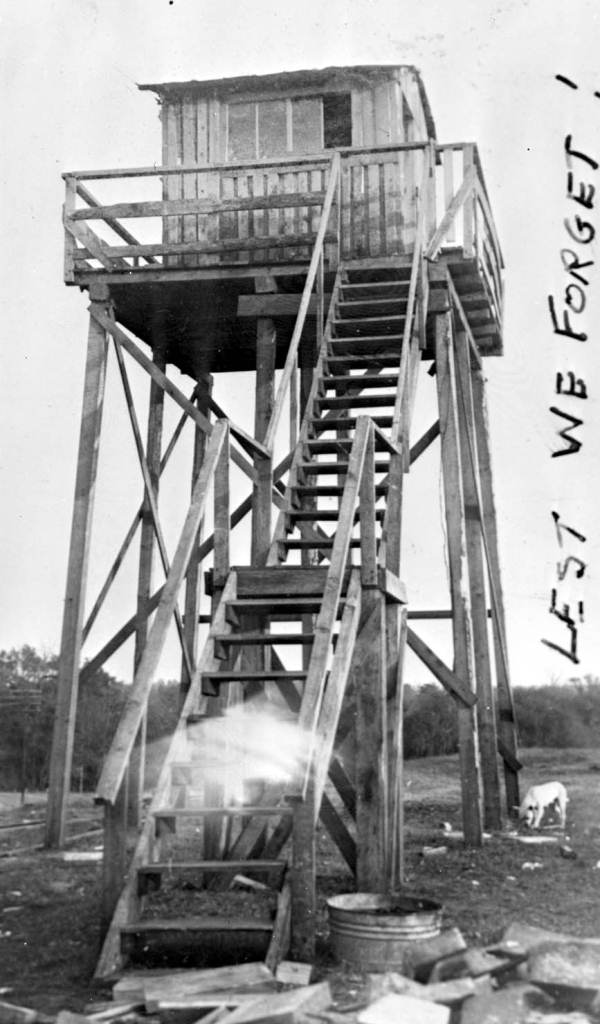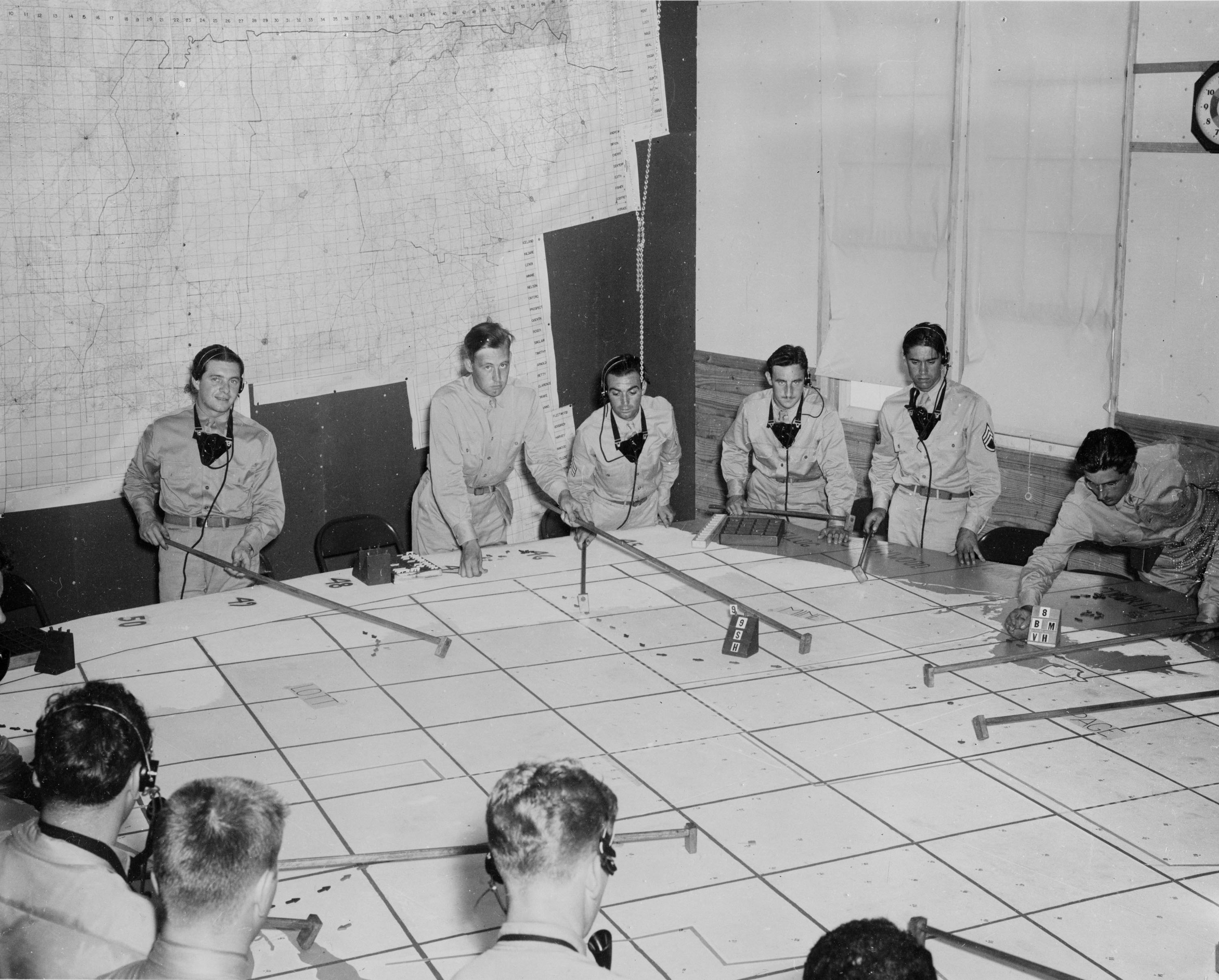Description of previous item
Description of next item
Eyes on the Skies
Published March 3, 2016 by Florida Memory
Over a quarter million Floridian men and women of all races joined the military during World War II, but civilians had a role to play in national defense as well. With over a thousand miles of coastline, Florida was particularly vulnerable to enemy air attacks. Recently developed long-range bombers had the ability to carry large quantities of explosives far from their base, and radar detection was still in an early phase. Thousands of Floridian civilians helped meet this threat by signing up for duty as ground observers for the Aircraft Warning Service.

An observation tower in Madison County used by the Aircraft Warning Service during World War II (ca. 1940s).
The Aircraft Warning Service was administrated by the United States Army Air Corps, but keeping a constant watch on every patch of sky over the coastal states required far more manpower than the Army could spare. That’s where civilians came into play. Once Army planners decided where the observation posts needed to be, they relied on local county and city defense councils to appoint local civilians to operate them.
Ground observers came from all walks of life. Retirees, students, housewives, laborers, and professionals alike volunteered their time to learn the shapes and markings of various aircraft and keep an eye on the skies. Teams of fifteen to twenty observers were assigned to staff each observation post in shifts. Each post was located near the center of a watch area consisting of about 36 square miles. The Aircraft Warning Service was originally organized in late June 1941; by mid-September eager civilians had already organized over 500 of the 880 posts planned for Florida.

Map of Aircraft Warning Service observation posts in Florida as of September 20, 1941 – Box 35, folder 7, State Defense Council Subject Files (Series 419), State Archives of Florida.
With war looming in late 1941, the Army had neither the time nor the money to build new civilian observation posts or supply them with sophisticated communications equipment. Instead, the Aircraft Warning Service used existing fire towers and other elevated structures, and trained volunteers to communicate their observations quickly using existing telephone lines. When observers sighted an aircraft, they were instructed to immediately contact their local telephone operator, who would connect them directly with a regional “filter center” set up to process aircraft sightings. The observers were given a specific form to use in reporting what they saw. In theory, if an enemy airplane was to enter United States airspace, the Army would be able to use data received from multiple observation posts to tracks its movements.

One of the centers where U.S. Army personnel compiled information from ground observers to track the movement of aircraft over U.S. airspace – Box 48, folder 7, State Defense Council Subject Files (Series 419), State Archives of Florida.

Flash message form used by Aircraft Warning Service ground observers (ca. 1940s) – Box 35, folder 7, State Defense Council Subject Files (Series 419), State Archives of Florida.
The system received its most dramatic test in December 1943 when aircraft spotters at an observation post in West Palm Beach reported an actual German plane flying over the Florida coast. The spotters, Mr. and Mrs. Merrill Smith and Mrs. Herbert Weiss, performed their duty exactly as they had been trained. They sent a “flash message” to the United States Army Air Corps by telephone, correctly identifying the aircraft as a German JU-88 and giving its location and bearing.
Luckily, although the plane was indeed German, the pilot at the controls was an American. According to contemporary newspaper reports, a disgruntled German pilot had voluntarily turned the aircraft over to Allied personnel in almost mint condition. The plane was subsequently flown back to the United States, where it was given a thorough examination by Army aviation experts. Allied aerial squadrons had been notified of the enemy plane’s planned voyage, but so far as the civilians ground observers knew, it could have been the start of a real attack!
The Aircraft Warning Service is just one of many ways Floridian civilians aided the Allied war effort during World War II. Visit our Florida in World War II exhibit for more information. Also, if you’re interested in learning how your Florida community responded to civilian defense challenges during this conflict, consider visiting the State Library & Archives to check out the subject files of the Florida State Defense Council (Record Series 419).
Cite This Article
Chicago Manual of Style
(17th Edition)Florida Memory. "Eyes on the Skies." Floridiana, 2016. https://www.floridamemory.com/items/show/321972.
MLA
(9th Edition)Florida Memory. "Eyes on the Skies." Floridiana, 2016, https://www.floridamemory.com/items/show/321972. Accessed December 17, 2025.
APA
(7th Edition)Florida Memory. (2016, March 3). Eyes on the Skies. Floridiana. Retrieved from https://www.floridamemory.com/items/show/321972

 Listen: The Folk Program
Listen: The Folk Program